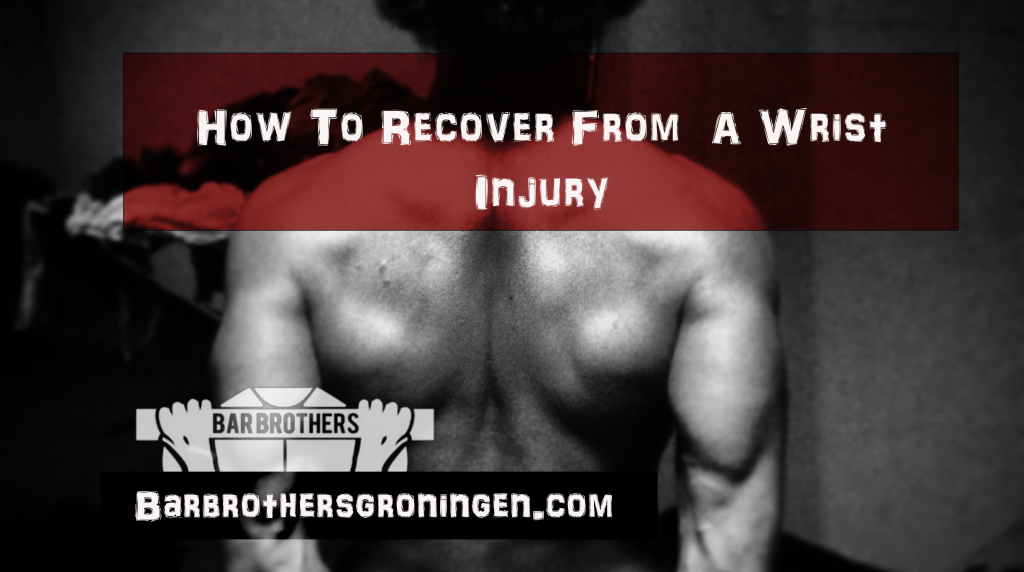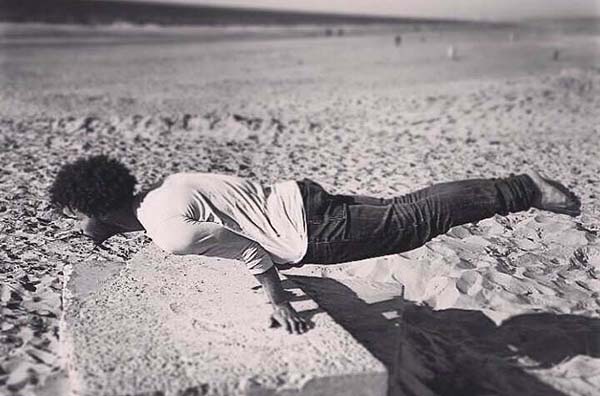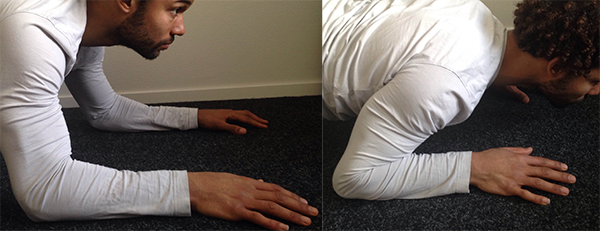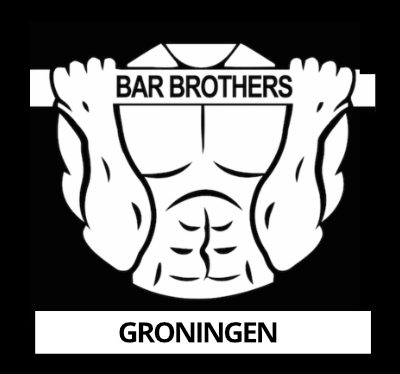Oh no! It happened.
You got yourself an inevitable wrist injury.
Just like David from the forum.
It will happen, sooner or later…
Why? Because that’s part of developing yourself and finding that sweet spot where your limits meet your capabilities.
In some occasions you will go over those limits.
“Only those willing to risk going too far can possibly know how far they can go.”
Fortunately, you can prepare yourself and train your wrists into something which is referred to as anti-fragile.
Anti-fragility is a concept which boils down to the ability of someone or something to recover from injury and become stronger in the process.
Having strong wrists is not necessarily about them being indestructible, but it’s about developing the skill set to make them stronger after you have injured them.
You can keep injuring yourself and recover into the same level of strength.
Or you can develop anti-fragile wrists by using the tips and tools in this post. The choice is yours.
Are you ready to jump in?
The Number 1 Myth To Overcome Injury
When you have an injury, don’t recover into rest, recover into movement (Keep doing all the exercises you can).
Move the injured part as soon as possible without damaging it any more.
The major misconception is that you need to stop moving completely.
Why keep moving? When you rest, your wrist actually moves towards immobility/death.
In the human body movement is life, not moving is death.
Not moving is something you want to prevent at all costs.
Even when you are injured.
Here is essentially what happens:
You injure your wrist —> stop moving —> wrist becomes weaker/immobile, your body stops giving resources to that part—> recover out of the injury—> recover into movement again —> wrist becomes stronger
Here is what should be done:
You injure your wrist —> keep moving in an adapted way —> wrist does not become weaker, maintains a certain degree of mobility —> recover into more movement —> wrist becomes stronger
The major difference is between stopping your movement completely versus keeping movement going in an adapted way.
As soon as you stop using something, the body stops giving resources to that specific thing, because your body wants to run as efficiently as possible.
However, this backfires in recovering from injury, because your body starts tearing down the part you want to keep using, but essentially can’t.
So you want to keep signaling your body that it needs to keep distributing resources to that part by maintaining a degree of movement.
So how can knowing this benefit you?
How I Recovered From A Fractured Left Wrist And A Severely Bruised Right Wrist
On a more personal note, I have had some serious injuries in the past.
But that hasn’t kept me from working out.
And neither should it keep you from doing the same.
5 months ago I broke my left wrist and bruised my right, which made both my wrists almost completely immobile.
I couldn’t open doors, prepare food, let alone do normal push ups, dips or pull ups.
Honestly, I couldn’t do anything.
At least that’s what I thought.
Stubborn as always, instead of “what can’t I do?”, I asked myself: “What can I do?”.
I could do leg exercises, ab exercises and I could still train my right wrist with isometrics in aligment and started doing the same with my broken wrist as soon as the plaster came off.
In addition to that I started to workout around my injury.
Instead of regular push ups, I switched to half push ups and progressed into fist push up holds and eventually into first push ups which require less wrist movement.
Here is what the half push up looks like.
The Half Push Up
Main muscle group: Chest
Additional groups: Shoulders, Triceps
1. First place your hands and lower arms flat on the ground at shoulder width.
2. Stretch your legs, make sure only your toes and the balls of your feet touch the ground.
3. Straighten your body by contracting your ab muscles (make sure you do this well or you will injure your back).
4. Look straight in front of you at a fixed point.
5. Bring your chest down to the ground by bending your elbows you exhale.
6. Push yourself up and straighten your arms to a 90 degree angle as you inhale.
The advantage is that you can still do a modified push up without putting weight on your wrists.
The Fist Push Up Hold & Fist Push Up
Main muscle group: Chest
Additional groups: Shoulders, Triceps
1. First place your fists on the ground and stretch your arms.
2. Stretch your legs, make sure only your toes and the balls of your feet touch the ground.
3. Straighten your body by contracting your ab muscles (make sure you do this well or you will injure your back).
4. Look straight in front of you at a fixed point (If doing the push up is too hard, hold this position).
5. Bring your chest down to the ground by bending your elbows as you exhale.
6. Push yourself up and straighten your arms as you inhale.
Antifragilizing Your Wrists
Here come the anti-fragile part, I started training for the movement which caused the injury.
Injury usually happens when your tendons or joints get out of aligment.
So what do you do? You train your wrists to get used to those kinds of movements…
I did 3-5 minutes of in aligment isometrics + out of aligment isometrics.
Now 5 months later my wrists are stronger than they have ever been.
The general rule of thumb should be: “Never stop moving and the sooner you move the better”.
Wrist Injury Recovery 101: 7 Tips
1) Find out which movements hurt, if the pain is too great contact a medical professional first.
2) Keep doing the exercises you can and ask yourself: “What can I do?”.
3) Change your execution and exercises such that they allow you to move free of pain.
4) If you can still move, focus on in isometric in aligment training first to increase wrist mobility.
5) As soon as you are able to move in aligment, start focusing on anti-fragilizing your wrists by moving out of aligment.
6) Never skip a wrist warming up EVER…
7) Never stop moving the parts you still can.
And when your oh-no-it-happend-moment sneaks up on you -which it surely will- you will be prepared to face it head on.
Beast Mode ON!








Thanks so much for the info.
Got lots of ?? since I am a beginner.
I can only do about a dozen or so pullups and chinups combined. I do not do warmups.
At the beginning and end I hang from the bar for a few breaths with both feet off of the ground using the supinated grip and the pronated grip.
I also have something to stand on to put my arms in front of me folded, and then I use only shoulders and forearms to support me as if I were getting ready to do a muscle up.
Good or bad? I have only been into calisthenics since November. Also, I try to do a workout
at least 2 times a day.
Any advice? I am only 5 ft. 2 1/2 in and the chinning bar is 5ft 10 inches.
Thank you.
Hey Mike,
Haha, thanks for the comment!
Bro, you need to do a proper warming up first and foremost! NEVER train without a proper warming up, you are going to injure the !@# out of yourself.
So first of all go do a proper warming up:
http://www.barbrothersgroningen.com/body-weight-warm-up/
Secondly, I can recommend the 6 month beginner plan, which will help you develop the power for a muscle up!
Hope this helps!
Beast Mode ON!
I can be reached at mfitzryk@gmail.com
Check the previous comment!
Hey brothers.
Soon after injuring my wrist, I wind up in the hospital with an unrelated injury. Just got out and no working out till this heals up. At least another month. Im doing nothing and getting lazy, i feel like all the work over the last few months is gone or will be. At least im out and alive.
Any advice on what to do till i can workout again?
Thnks
BAR BROTHERS ALL DAY!!!!
Hey David,
That sucks to hear, at least you still have the motivation to go on!
What you can focus on when you are limited in your movement is your diet, try to experiment with what you are eating and when you are eating. Try to eat healthy clean foods as much as possible.
A lot of people forget to train their ‘diet muscle’ ;).
I don’t know what your injury exactly is, but try to move as soon as possible. Even if it’s just taking a walk or crawling or hanging or squatting. Do what you can with what you have.
Hope this gives you something to hold on to bro! Goodluck with recovering and if you have any other questions, let me know!
Beast Mode ON!
Thanks for the reply.
I thought I had torn my tricep, but was diagnosed with a staph infection inside of my arm. Spent 3 days in the hospital on IV antibiotics. Sure feels like the tricep, though. Can’t bend my arm at the elbow or shoulder—any weight I pit on my wrist results in pain shooting from my wrist to my shoulder and into my back.
Good times
Anyway, I tried to work out my right side (my left is injured), do squats and situps but any movement puts stress o my left side. You know yourself it’s difficult to isolate one muscle without putting stress on the others. Doc says to do as little as possible till this heals. And by little he means picking up a pen from the table and moving it somewhere else.
I’ve been following paleo/renegade but I’m slipping since this happened. I’m not chugging fast food, but it’s tough to cook with one arm. Suppose I’ll learn.
It could be worse. I look at it like this: Suppose they do say I blew my tricep. So what? I’m 43 and have MS. I blew my tricep from doing over 200 pushups when I workout, 30 pullups, 50 straight bar dips. How many guys my age can do that? Just sucks cuz I feel like all the work I did over the last three months or so is gone.
But…..wait till you see what I do when this heals up
Thanks again.
BAR BROTHERS ALL DAY!!
Hey David,
All the work is never done for nothing, it taught you that you are capable of more than you thought you were. And you know what, if you can do it a first time, you can do it a second time too.
Take your rest and allow your injury to heal. Remember eating clean and healthy food helps with the recovery.
When all is set and done, you go for it again, a little smarter, a little more resilient and determined than you were before. If you have any other questions, I’m here to help!
Beast Mode ON!
Lots of good info here. Broke my wrist a few years back and I wish I had all this info before. Wrist works fine cuz I never stop pushing myself to be better at keeping myself fit. love the shit outta you guys at bar brothers. Always have new techniques and challenges that are awesome. Keep sending this info out there man. Beast Mode On!
Hey Edd,
Thanks for the comment bro!
I’m happy that you have found this website and are taking the useful bits and pieces out of it!
That’s it man, keep pushing, that’s why I recovered completely too, unfortunately a lot of people don’t have the will power of the knowledge and as a result stop training completely.
I really appreciate your comment, that’s what keeps me going and why I am doing this stuff! It means a lot to me.
Beast Mode ON!
Hello there, Bar brothers gronnigen, anyway I would like to ask something, I’ve been training and practicing calisthenics for about 3 years until now. Currently I having a wrist injury due to doing muscle up where the bar is not the parallel one but the bar that is commonly seen in the typical gym. The bar that have a gap in between them, I was so pump up and when i did my muscle up for the last set, I was so tired and pushing myself using my wrist. Suddenly after that, I do feel slight uncomfortable. The next day is even worst, my left and right wrist when doing flexion ,extension or left and right, I felt very painful.Now few weeks later until now, I am scare i can do dips,muscle ups, push up anymore because of the slight pain i have now. Still in recovering. What I can do now. Should I continue to go physiotherapist or let it rest more ?
Hey Noor,
I know how it feels. As you have read in this blog, I don’t believe in passive rest. I believe in active adaptation.
What can you do?
Secondly, do a really, really, really good warming up from now! How long are your warming ups? Less than 10 minutes? Well if it is, you are asking for trouble especially when you are recovery from an injury.
Don’t be afraid, you are going to get injured regardless, the question is how do you deal with it. Do you have the tools to recover.
Then again, if you feel more comfortable contacting a physiotherapist, by all means do so! I however believe that with the right warming up (At least 10 minutes + training in and out of alignment, you are going to recover 100%).
Hope this helps!
Beast Mode ON!
Hi Rich,
I’m 35 years oldand have an hernia in my back and would like to ask if the bar brothers program is suitable for someone like me.
My problem started in 2013, I have been on rehabilitation, feel better now (I still feel some pain, not as much as before).
I would very much appreciate your thoughts.
Kind regards,
Robin
Hey Robin,
Great question, I have a friend who also has some hernia problems, but does human flags. Still there are many different factors which contribute to a hernia and which eventually contribute to recovering/strengthening the tissues, bones etc. in the right way.
The main point of importance here is to remain healthy and not force yourself into injury. In your case, definitely paying special attention to the area of injury will be key. Being an outsider it’s very difficult for me to say, what exactly you should do, but things such as swimming, hanging, and crawling (The warming up blog) are great for spinal release and strengthening. In 99% of the cases moving the injured part in an adapted way is way better than resorting to a sedentary life style where your body will not need to rehabilitate and strengthen itself. Moving the non-injured areas will contribute to strengthening of the injured areas as well. Calisthenics and the neurological complexity it requires compared to weightlifting make it far superior in most cases for long term rehab and longevity, if done correctly.
So while this is very difficult for me to answer exactly, there are definitely tools that are beneficial. More, moving has shown to be by far the best ‘medicine’ for the body, so all with all those things in mind. Definitely great to follow a calisthenics program, but ‘do it your way’ and while communicating with a medical professional.
So patience in the process and being smart about what you do and there is no reason why you shouldn’t be doing ‘human flags’ at a certain point.
Beast mode ON!
Hi Rich,
I have been hitting the gym for almost 9 months now. I’m following a paleo diet and everyone could see the great results on my body. I actually started to get bored of those heavy weight and I read about calisthenics not so long time ago so I decided to give it a try. I tried some of the intermediate exercises you have posted on this website and I seemed to do pretty well (of course except some more advanced ones like the muscle up and the typewriter pullup). Three weeks ago, I was doing a chest and triceps routine I found on youtube and it was going well until I did my last set of triceps extension on the ground. I actually did it wrong. I had my hands straight (not like the diamond) and close to each other instead of having them straight and as wide as my shoulders. I felt like my wrist got dislocated and got back in place or like a tendon scratching the bone hard. The doctor said its wrist ulnar tendinitis. It’s been three weeks now and my wrist still hurts. I can swim or do fist pushups without pain but i can’t do weighted dips or frog stands or or pullups or any other exercise without my wrist getting really sore. I had a tendinitis in my shoulder three years ago and it took a year to completely heal!! So Im getting really frustrated as it also burns and is stiff even at rest. I badly need an advice from you. I was really getting into calisthenics and I even found a gym that gives a calisthenics class where I live, probably the only one here. It’s so frustrating that I cant hit the gym anymore!
Cheers! BEAST MODE ON.. VERY SOON HOPEFULLY
Hey Rabih,
Welcome to the movement!
Whoohoo, definitely great diet choice ;).
I hate to tell the truth, but you are too impatient. You are overusing your joint without proper preparation, which is causing your tendonitis.
Jumping into weighted calisthenics or more advanced moves from a gym background is not the smartest thing to do, simply because static machines don’t prepare you for dynamic compound movements which put a lot of stress on the smaller joints.
On the other hand, I love your attitude and will to go HARD :D. I actually made the same mistake multiple times hahaha.
So to protect and strengthen the wrists, check this post: http://www.barbrothersgroningen.com/bar-brother-calisthenics-warm-up/
Read this blog: http://www.barbrothersgroningen.com/wrist-routine-exercises/
The stretches mentioned in the warm up should be done in combination with the side wrist push up and knucke raises prior to ALLLL your upperbody workouts, ALWAYS no exception. The others can be done depending on your level of strength and progress. Start on your knees first.
Build it up slowly, you need to strengthen your wrists again.
Optionally you can add this exercise: https://www.youtube.com/watch?v=iFHMnIp9RPA Do this for 1-2 minutes without any pause, you will feel the blood rushing to your hands and wrists. This fresh blood will speed up your recovery.
Beast mode ON!
I wish I just broke my wrist. I tore 3+ ligaments in the same wrist. I think that’s a completely different story than a fracture. There’s also a difference between tendinitis (short term) and tendinosis (long term)- I’ve had both. One requires rest to alleviate inflammation, the other takes movement/flexibility/strengthening/isometrics. I’ve broken 3 bones (1 a wrist) and I’d go for that anytime over a ligament injury!
I had to immobilize it for the ligaments to heal, otherwise it would never be the same again and I’d never be able to live free of pain. I went to several doctors and therapists. Now 10 months later, I still have pain in pushups, even after hours of physical therapy and isometrics and all that. I can do fist pushups, but to a certain limit before pain shows up again. Ligaments take a very long time to heal and if pain is your guide, expect a year or more before you can go back to where you were (at least if you’re over 25). I was a gymnast and a climber. Hopefully I’ll heal soon and can continue training to get strong again. Thanks for sharing the exercises.
Hey Erin,
In all honesty, every form of recovery implies movement. It can be movement of blood, movement of joints, movement of nutrients, even movement of ideas. Research is showing more and more that pain is a ‘construct’, there are people with herniated discs who feel completely fine and people with fine discs who feel horrible back pain.
Moving away from movement is ultimately putting you in the opposite direction of where you want to go.
You are more than welcome Erin.
Hope these drills help you.
Beast mode ON!
Oh yes, and some encouragement for you all out there! I forgot this..hehe. I have had chronic back pain for 7 years, and I’m only 26. For the first 6 years, it was really rough. I started out with having episodes every 6 months where I had extreme pain and couldn’t do my normal activities. Then after 2 years of that, I started having episodes every month or so where I couldn’t walk, or even stand- my husband literally had to carry me to the bathroom. At first, annoying. Then depressing, then demoralizing, and fear-causing- would I need a wheel chair by the time I was 30? In my second year, I started seeing a chiropractor. It helped. Until I worked a job where I carried 35% of my body weight and hiked 8 miles a day, wearing heavy boots. Then the chiropractor stopped helping. I wasn’t sure what to do, but started thinking about how I can live my life without the ability to walk without support. I used a cane when I was 24. I realized I could use that when my husband wasn’t around to pick me up. Then I thought- hey I could be really cool and use Canadian crutches and actually go to work just fine- I’ll just have to stand and then sit. And then stand. And then sit. Every 3 minutes. Then I went to a physical therapist who had done the exact activities that I do- climbing and gymnastics. She taught me how to take care of myself by strengthening weird hip and core muscles that nobody knows is there except maybe doctors. (Believe me, I had STRONG abs. No one could match me. But those muscles weren’t good enough to support my back.) After doing really weird exercises that workout my pelvic floor muscles everyday and every night, and adding that awareness into my workouts. I’d never been stronger. Thanks to a solid foundation built by a solid therapist. Soon she had me doing gymnastics in her office (much to the amusement of her co-therapists). I’ve been well over a year now, pain free! All because of muscle awareness and learning how to support my own body with the muscles I have. I get soreness every once and a while, but it doesn’t stop me from doing any activities at all. Yay!
Then I tore up my wrist. Whoops. Well, at least my back doesn’t hurt. Maybe we can all learn how to heal ourselves by learning how to support the painful parts with our own muscles.
Hey Erin,
Thanks once again for your awesome comment!
Very inspiring. Perhaps an additional avenue for you would be ‘stuff by ido portal’.
Just check out his documentary ‘just move’, I’m sure it will open many doors for you.
Beast mode ON!